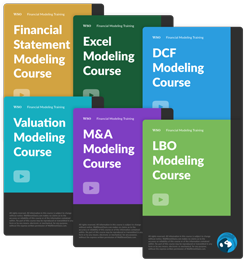Which Risk free rate to use to calculate Cost of Equity?
Got asked this in my interview.
Basically, they asked me how to calculate cost of equity, and when i brought out CAPM, they brought up a problem with the following details
- Company's main operations (99%) in the emerging markets (e.g. Brazil)
- Listed in London Stock Exchange
- Cash flows in USD
What Risk free rate to use? Would it be different if you were buying the equity on the London Stock Exchange or buying part of it's project finance debt of it's project in Brazil,
I said the risk free rate would be the USD 10y, given that the cash is in USD and investors would seek to replicate their returns in a similar currency, but then brings about the London Stock Exchange, and...... I wasn't too sure.
Appreciate the help.



I wouldn't use CAPM for this. CAPM is pretty stupid anyway because beta =/= risk, but I digress.
Use a yield build-up method where you take your local RFR, add on country risk premium for Brazil and a currency premium for GBPUSD currency risk, and then add on your equity risk premium.
If you have to use CAPM, probably play it safe and go with the Brazilian RFR because that's where the operations are, and therefore where the business risk is located.
Thanks for the reply.
Just to be sure regarding the yield build up method you suggested, how should i going about to get Country risk premium for Brazil and a Currency Premium for GBPUSD and finally the ERP?
Would think that I should use the following to get the aforementioned rates:
10y Brazillian no Coupon government bond as the local RFR
For the Country Risk premium for Brazil, I will use local currency sovereign rating, and calculate default spread for that rating over the risk-free rate, or Obtain CDS spread for the country and subtract US CDS spread
Currency premium being the forward premium via spot and future GBP and USD rates according to this (http://www.investopedia.com/terms/f/forwardpremium.asp)
For ERP, I will use the Brazillian stock market to find the required market return and use correlation of the stock in the LSE for the beta
Would appreciate it if you could give feedback for my above suggested method.
Would also like to note that it's seemingly different from a previously suggested answer: https://www.wallstreetoasis.com/forums/what-is-the-risk-free-rate-used-…
One of the replies said: "If the company's main operations are in Brazil but it is traded on let's say NYSE, use the U.S Government Treasuries as your risk free rate. The equity risk premium is where you account for the potential volatility the market prices in for emerging markets."
Just wondering what your thoughts are regarding that reply, Thank you.
Methods for obtaining rates seem fine, although when I said local RFR I meant US (assuming you're based in US). You're already accounting for the Brazilian risk when you add on a country risk premium. Think of it this way:
Your minimum return for investing in anything at all + required additional return to invest in Brazil + additional required return to invest in a different currency + additional required return to invest in equities = discount rate for Brazilian equities denominated in Sterling for a US investor.
You may even go further and add on an additional risk premium if the company is small or operating in a particularly volatile sector.
The comment from that other thread is essentially saying the same thing, except they're amalgamating country risk + equity risk into one equity risk premium. You would not use the same cost of equity for a NYSE-listed US company as you would for a NYSE-listed Brazilian company.
Remember none of this is science and there is no 'correct' answer so as long as you can explain your thinking logically in an interview, you'll be fine.
My answer would vary in detail and qualifying factors depending on the type of firm it is. Sell side/buy side? If buy side, equity long-short/macro/ etc?
Modeling - Current Risk-Free Rates, Betas, and Risk Premiums (Originally Posted: 12/06/2008)
Guys,
With the volatility of current market conditions (crazy low treasury rates, betas all over the place, and huge drops in market returns) what are you guys using as your risk-free rate, beta, and risk premium to implement the CAPM in your financial model for example?
For some reason, I feel like using the current numbers for each of these variables does not give the right depiction of firm's cost of equity (when creating a 10-year + financial model for a company)?
I would appreciate your expertise.
lol is this really how analysts come up with recommendations of "buy" and "sell" for stocks? http://www.investopedia.com/terms/c/capm.asp
No, they use multiples but still do DCF valuations to make sure that their price objectives make sense.
Just use historical figures. If you use the current risk-free rate, market risk premium, etc. you will get extreme valuations.
Et exercitationem neque et. Consequatur et corrupti non non aut repudiandae nemo. Necessitatibus consequatur praesentium dolor provident quia. Blanditiis sint delectus ab maxime aut qui recusandae. Qui doloremque mollitia quas rerum deleniti aperiam. Quia laudantium aliquam corporis veritatis occaecati incidunt.
Sit fugiat quidem aut dolorum odit incidunt maiores. Cupiditate nobis rerum laboriosam fuga maxime et soluta. Qui neque maiores odit atque vel odit consequuntur. Molestiae qui iste eos quasi. Pariatur repellendus necessitatibus perferendis et et qui quaerat.
Praesentium voluptatem vitae quos inventore. Repellendus et laudantium dolore eius repellat maxime dolores temporibus. Aut id ut vitae. Animi aut magnam in id dicta ad aperiam animi.
See All Comments - 100% Free
WSO depends on everyone being able to pitch in when they know something. Unlock with your email and get bonus: 6 financial modeling lessons free ($199 value)
or Unlock with your social account...